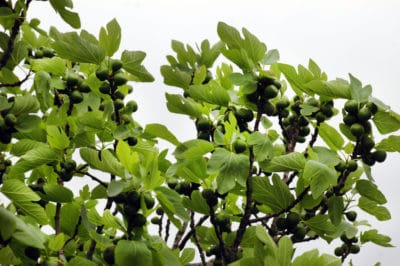Figs Around the World
Edible figs are native to the Mediterranean. Others originated in tropical or semi-tropical habitats. Edible varieties grow in USDA Zones 5 through 11, although in colder areas, the tops may freeze even though the roots survive. Others, like the creeping fig, have a more limited range – Zones 8 to 11. Banyans and strangler figs are limited to Zones 10 to 12.
Edible Fig Producers
Although figs are grown in many gardens, commercial production is more limited. In the US, California, Oregon, Texas, Utah and Washington are the major producers of edible figs. Turkey, Egypt, Morocco and Iran are the largest producers of figs world-wide and the primary source of imported figs. Chile, New Zealand, Spain and Algeria are secondary producers.
Figs in the Garden
When siting figs in the garden, the two most important criteria are sun exposure and drainage. Figs need at least eight to 10 hours of full sun every day. Figs are not particular about soils, having originated in areas where the soil is poor. They also tolerate acidity and drought once well-established. However, they will not do well in water-logged soils.
Edible Fig Types and Growing Range
You’ll find a number of different edible figs that will grow in the US. Among them are:
- Black Mission – top commercial variety for zones 9 to 11.
- Chicago Hardy Fig – zones 5 to 10.
- Desert King – good in zones 5 to 9.
- English Brown Turkey – very hardy, best in zones 6 to 11.
- Violette de Bordeaux – hardy and self-fruitful, zones 5 to 10.
Growing Figs Indoors
Many ornamental figs can be grown indoors. Ficus lyrata, or fiddle-leafed fig, is a popular houseplant, as is Ficus benjamina, the rubber plant. Creeping fig – Ficus pumila – is a ground cover outdoors but can be used for topiary or a table-top bonsai plant indoors. All of these figs should have bright indirect light and soil that drains well. Repot once a year.
Growing Figs in Containers
Depending on the variety, you might want to have a container fig that spends its whole life outdoors or one that comes inside for the winter. You can grow edible figs in containers and harvest some fruit if you choose the right variety. Violette de Bordeaux, for example, has a rich flavor, strawberry-colored pulp, and is hardy and self-fruitful.
